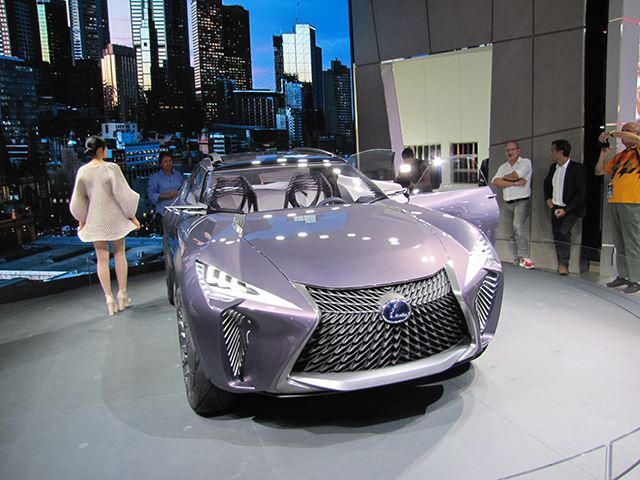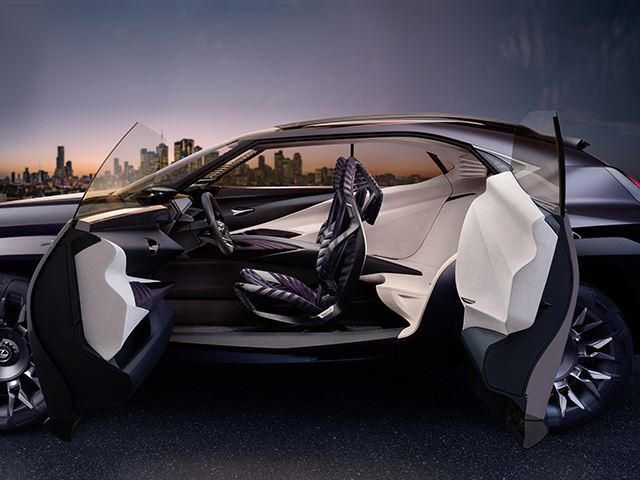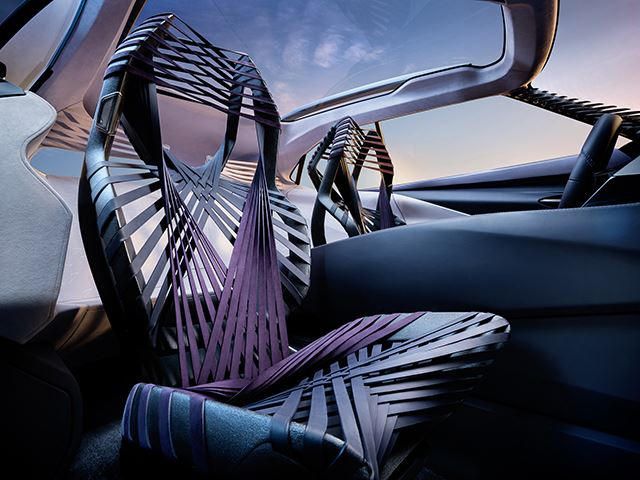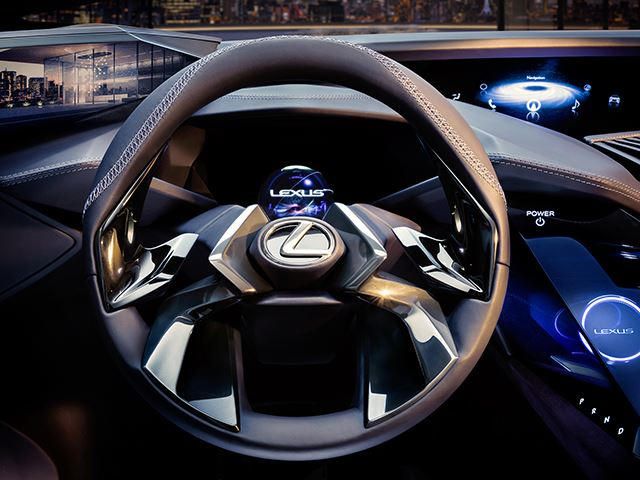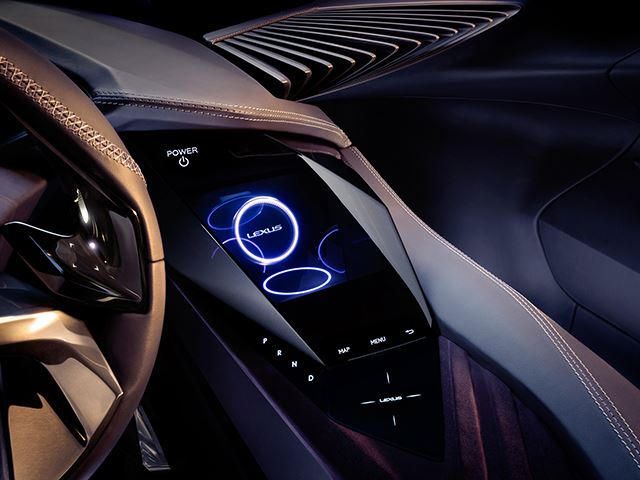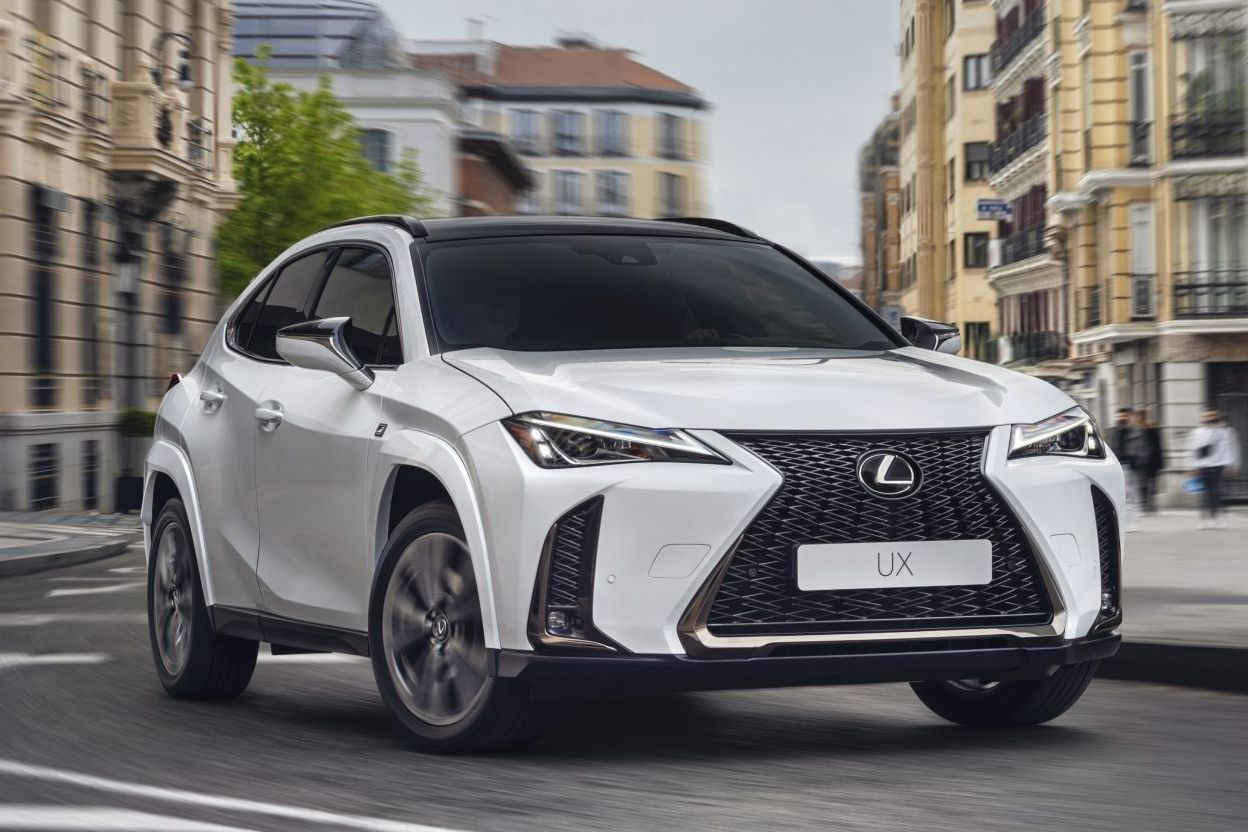
The south of France is one of the world's most popular tourist destinations thanks to its natural picturesque views, but it's also home to Lexus' ED2 design studios. Perhaps that's why we were a bit taken aback when the automaker peeled the wraps off its new small crossover, the UX. Lexus previously leaked images of the spunky and radically designed transporter for young urbanites and now that we see it in the metal, it's in-your-face design theme does little to invoke images of the rolling coast of Southern France.
At least Lexus' lack of subtle designs prepared us for this moment. Angles sharp enough to cut flesh or air are strewn around the car, starting at the wedge-shaped front end, passing over the somehow more radical spindle grille, ricocheting into the air over the greenhouse after passing the long hood, and ending with a downward slope after passing the rear doors. Inside out is the theme of the design, which explains why the UX has a skeletal look to it. Fins on the see-through polycarbonate A-pillars help reinforce this image while allowing the reinforcing structure to help drivers have an unobstructed view in the corners, kind of like the Kia Cross GT Concept.
Shadowy lines are cast throughout the interior - which, despite the hefty use of glass, feels blended with the outside rather than an insulating bubble - by the web of Kinetic Seat Concept introduced weeks ago. One notable feature is the mirrors, or lack thereof. Instead, cameras keep an eye on the blind spots and divulge information to two screens that are conveniently placed on the fenders. Following the inside out styling, the fenders themselves flow into the cabin and provide housings for the screens. If the rest of the interior looks just as confusing to you, don't worry, Lexus intended it that way. Deconstruction was the key word used for the design of the inside.
That's because designers wanted occupants to see the bewildering shadows, contrasts, and lines and not be able to tell where one interior element started or ended. Further distracting a driver is a 3-D instrumentation display that features a floating orb onto which information is projected to make a holographic effect. Instead of housing all of the connection on the dashboard, the UX attempts to engage the driver by flowing the ergonomics from the driver's body, through the seat, and to the steering wheel. As strange as the UX may be, it's currently only intended as a design study, which also means it doesn't come with any new and revolutionary powertrain.
Not only does the radical design show that Lexus is rethinking how to design a car for better ergonomics, it also signals that the company is invested in small SUVs aimed at urbanites that want SUV capability and the convenience of a car while living in a dense city. If the UX does make it to production, our guess is that it will look vastly different, both inside and out, in order to soothe the transition from Lexus' current design language to this new unique theme. Still, the UX might remain in a class of its own given that Lexus is determined to make each of its models have a unique standalone character with a unique concept inspiring it. Out of the entire lineup, we imagine the future UX based on this concept would be the Joker's preferred mode of transport.

